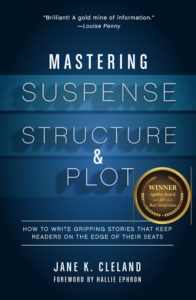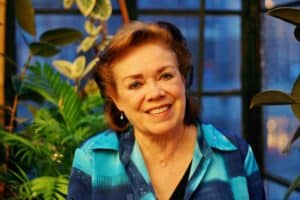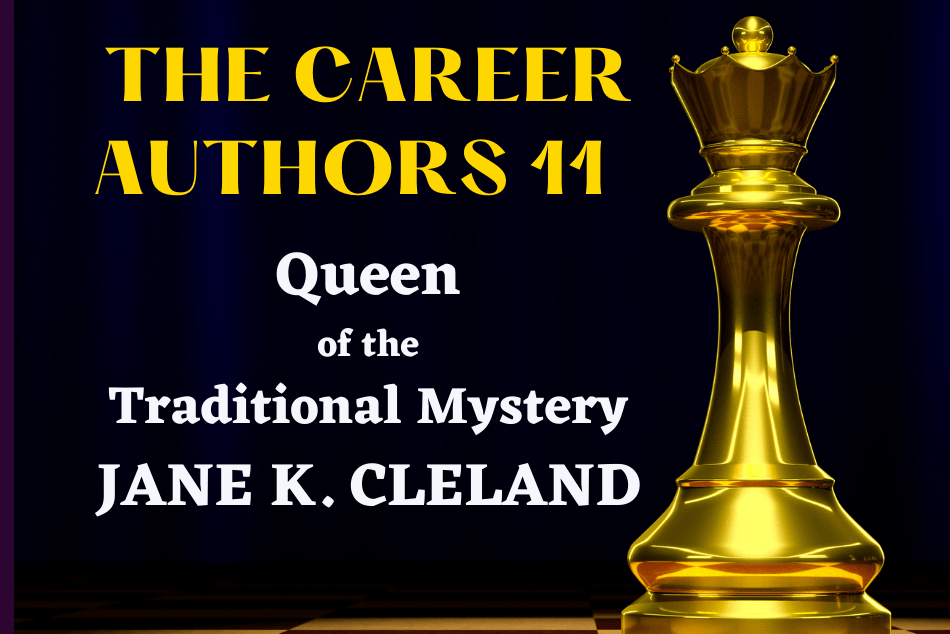Jane K. Cleland is one of those impressive and infuriating people who can do everything: Run a great business, teach a great class, make a great cocktail, cook a great meal, and, most importantly, write a great book. I first met Jane at a Mystery Writers of America board meeting, when she was the president of the New York chapter and I was the president of the New England chapter. I’ve been her fan and her friend ever since. (Another thing she does so well: Friendship.) If there’s anything you want to know about writing in general or writing traditional mystery in particular, Jane is the writer to ask. So we did.
- What book changed your life?
This is a wonderful, thought-provoking question and a tough choice. I’ve been a reader all my life, and many books I’ve read have been inspirational, meaningful, and insightful, but as I weighed the options, I kept coming back to Irwin Shaw’s Nightwork. The key narrative question in this novel seems to be whether a thief will be caught and the money he stole recovered. In reality, however, Shaw uses the theft and subsequent investigation as a structural red herring that allows the story to follow the thief as he travels around the world. We watch as he uses the stolen money to fix his eyes, buy nice clothes, and travel to glamorous resorts where he meets people who expand his horizons, and ultimately, who value him for the man he has become. The larger story arc is not about catching the thief or recovering the stolen money; it’s about the transcendent power of reinventing yourself. That idea made me brave—the notion that I could change my life changed my life.
- Was your first published book the first manuscript you ever wrote?
No. I worked for three years on a book that never sold. I, like many writers, was an innate storyteller, but that wasn’t enough to write a publishable novel. Then I learned more about craft and wrote a book that sold (Consigned to Death, the first Josie Prescott Antiques Mystery).

- Stephen King says, “The hardest part is just before you start.” What’s the hardest part of writing for you?
I find navigating the first 100 pages the hardest part. Until I get to know the people who populate my stories, I flounder. Once I get over the first hump (a plot twist, plot reversal, or moment of heightened danger, what I call a TRD), I’m confident I’ll be able to write the story.
- Do you know the story’s ending before you start?
I know the overarching conclusion, but I don’t know the details—for that I depend on serendipity. I plot using my roadmap (Jane’s Plotting Roadmap, which I helps me delineate the TRDs of my through-line plot, my two subplots, and the twist after the final twist.)
- When you’re having a difficult writing day, what do you tell yourself to get through it?
First, I figure out why I’m struggling. Only then can I develop a strategy to address the specific issue. (It’s usually that my ideas are overly prosaic or simply ho-hum, so I spend a lot of time thinking through different approaches until I come up with something that is fresh and on point.) Second, I try to be gentle with myself. I work hard to not judge my own writing while I’m getting a draft down on paper. In other words, I separate the creative process from the analytical process. I revise extensively, and with pleasure, but when I’m writing new material, I just write.
- Do you read your reviews?
Only if my publisher sends them to me.

- Besides being persistent and correcting your spelling errors, what’s your best advice for a new author?
Study exemplars in your genre. What do the bestsellers and longest-lasting books in your niche have in common? I’m quite analytical in my approach. When I was teaching myself the craft of writing a traditional mystery (my genre), I read twenty exemplars, assessing more than two dozen factors, studying everything from settings and themes to characterizations and the balance of exposition to dialogue. The idea wasn’t to write something derivative or formulaic, of course; rather, I sought to understand, from a reader’s point of view, what these books had in common—I sought patterns. I was able to use that framework to craft my own, original manuscript.
- What’s your definition of writer misery?
Not knowing what to write.
- What’s your definition of writer happiness?
Writing unambiguously. Hearing from readers that my writing meant something to them.
- What’s your favorite book on writing?
William Zinsser’s On Writing Well.
- What book are you reading right now?
I’m reading three books right now, a chapter or two at a time, two old favorites and one new book. The old favorites are Rex Stout’s Silent Speaker and Adam Hall’s The Ninth Directive; the new book is Peter Swanson’s Eight Perfect Murders.

Jane Window (high resolution/warm color)
Jane K. Cleland writes both fiction and nonfiction, including the long-running and multiple award-winning Josie Prescott Antiques Mysteries [St. Martin’s & Alfred Hitchcock Mystery Magazine] and the Agatha Award-winning bestsellers Mastering Suspense, Structure & Plot and Mastering Plot Twists [Writer’s Digest Books], recommended by Dan Brown, Louise Penny, David Baldacci, and Neil Gaiman. Jane is a contributing editor for Writer’s Digest Magazine, and the chair of the Wolfe Pack’s Black Orchid Novella Award (BONA), in partnership with AHMM. She is a frequent workshop leader and guest author at association meetings, writing conferences, and MFA Residencies. Jane is offering free monthly workshops on the craft of writing in the “We’re All in It Together,” series. Details can be found at www.janecleland.com.





